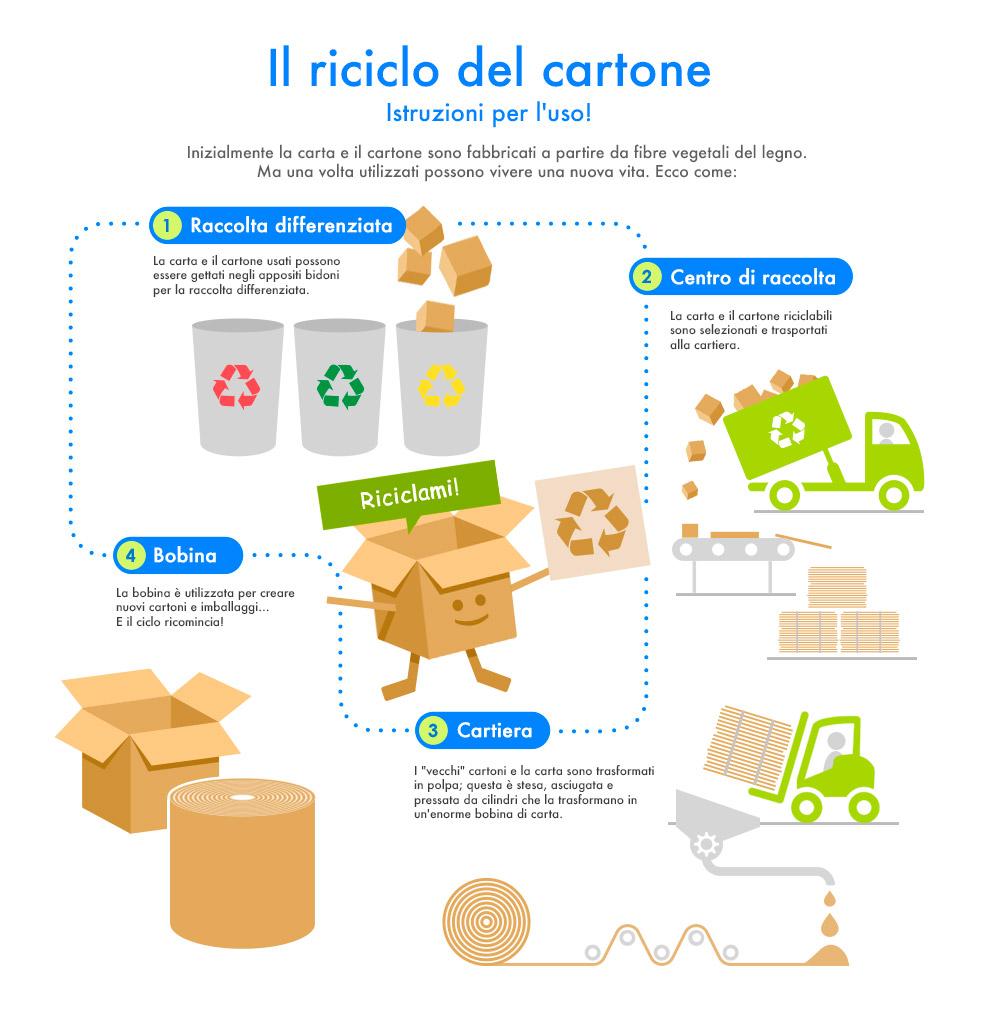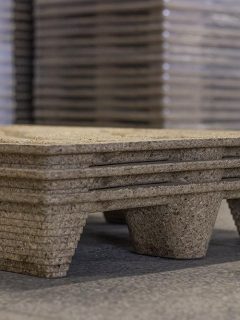How is paper produced?
Paper production is a physical, not a chemical process. Paper is made from natural substances: cellulose, calcium carbonate pigments, and natural starches from potatoes and maize. These substances have an intrinsic ability to bond together, without chemical additives. In its production process, it is greatly affected by environmental conditions.
First, the raw material arrives at the mill in the form of cellulose bales, 80% dry.
These, after being stored, are sent to pulpers, i.e. water basins in which the cellulose is literally pulped. In this environment, which is kept at a controlled density, sheets of paper are formed on the liquid surface, which are then fed into continuous cycle machines, which press them through various rollers to make them thin.
The production of paper involves a considerable input of water: 350 kg to produce one kg of paper. The new European directives on recycling methods oblige the use of technologies necessary for the reuse of waste water from the paper plant. In the recycling process, nothing is discarded: all the leftover paper waste ends up in a huge basin, where it is shredded and made into pulp again, together with the collected and sorted paper waste.
The paper mills work in a continuous cycle, 24 hours a day, and even for the coating, the bleaching of the sheets, they use a natural material such as marble dust (also a waste, it is the residual dust from the cutting of marble in quarries such as the one in Carrara).
Can we produce cellulose in Italy today?
At present, cellulose production in our country is practically non-existent, although in the past there was some production linked to poplar cultivation. Now production is limited to mechanical pulp.
Cellulose is imported from plantations under FSC control that do not affect virgin forests.
It comes to us mainly from Scandinavian countries, Chile, Brazil and North America, only in small quantities from neighbouring Austria and Germany.
In the light of this, it becomes essential to recycle paper in Italy!

Why recycle paper and cardboard?
The Paris Climate Conference held in 2015 highlighted how environmental issues have become a priority today. Many western countries have increased their level of environmental awareness, and as a result, the industrial sector is also increasingly trying to adopt green production policies.
For Italy, which lacks natural deposits and resources, environmentally friendly production efficiency would be a growth factor.
An efficient integrated urban and industrial waste cycle is a priority for all countries, especially ours.
The state of affairs for the paper and cardboard industry in Europe is quite satisfactory: we rank first in the world for paper and cardboard recycling. A newspaper thrown in the waste bin and sent for recycling returns to production after 7 days, a cardboard box after 14 days.
From Europe:
2 tonnes of paper are recycled every second;
72% of paper was recycled in 2012. World record!
90% of the paper mills that recycle meet the highest environmental standards, with no water spills;
deforestation is decreasing every day; the area occupied by forests is increasing; and the credit goes mainly to the growth of the ‘circular economy’, an economic system that supports itself by regenerating itself. And in the last 15 years, the capacity to recycle paper has doubled!
Here are the most significant numbers:
- 90% of magazines are printed on recycled paper
- 90% of boxes are made of at least part recycled fibre
- 72% of the paper consumed is then collected for recycling
- 54% of the fibres used to produce paper and cardboard come from recycled material.
And in Italy?
Italy also follows the positive European trend, we are in fact the fourth largest user of recycled paper and cardboard in Europe.
The paper recycling industry in Italy today represents a pillar in the growth of the circular economy, for which nothing is created and nothing is destroyed, but everything is put back into circulation.
In the recycling of packaging, paper and cardboard recycling exceeds all others (80%), followed by steel and aluminium (74%) and glass (70%). Across the whole peninsula, we manage to recover 9 out of 10 packages.
The paper recovery and recycling sector has an important economic value, and does not represent any burden on the community.
 Sources:
Sources:
http://noi-italia.istat.it
http://www.focus.it/ambiente/ecologia/carta-e-circular-economy-in-primo-piano-il-riciclo
http://www.rai.tv













